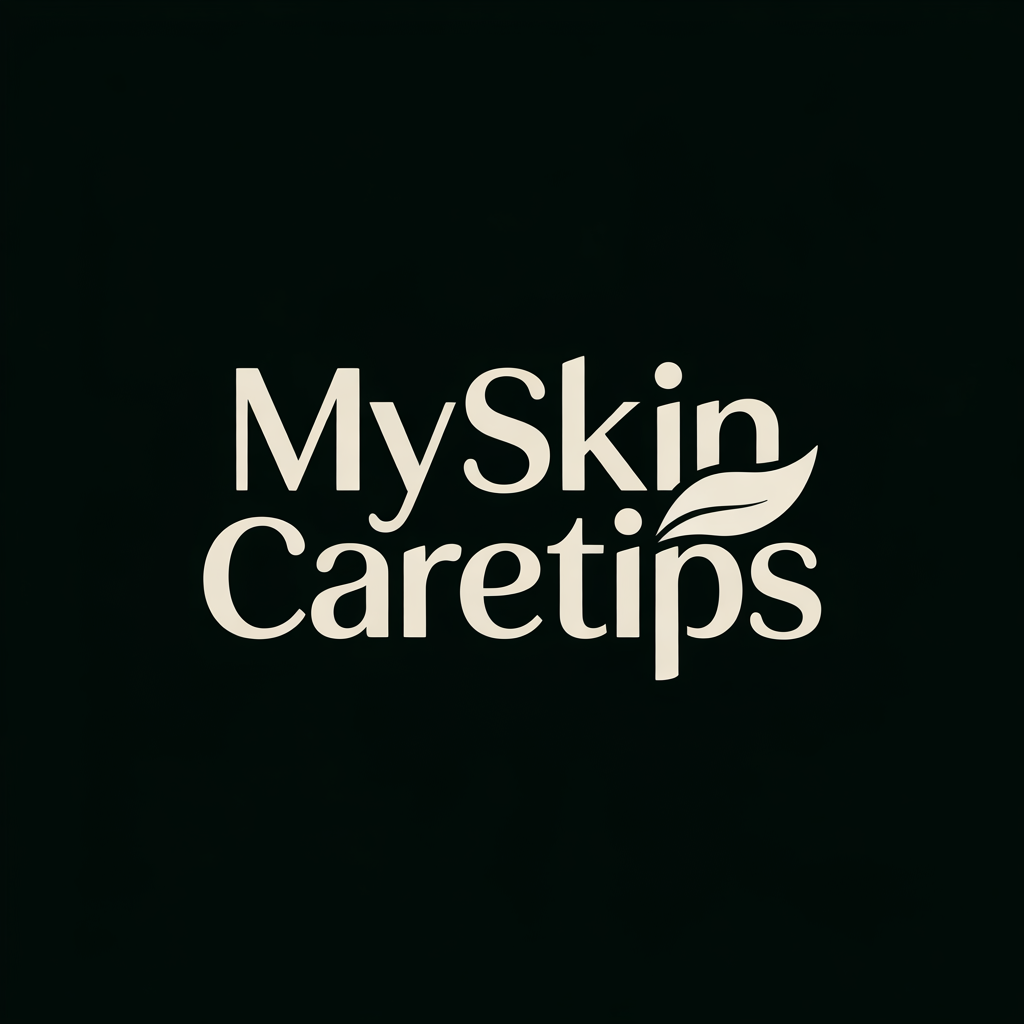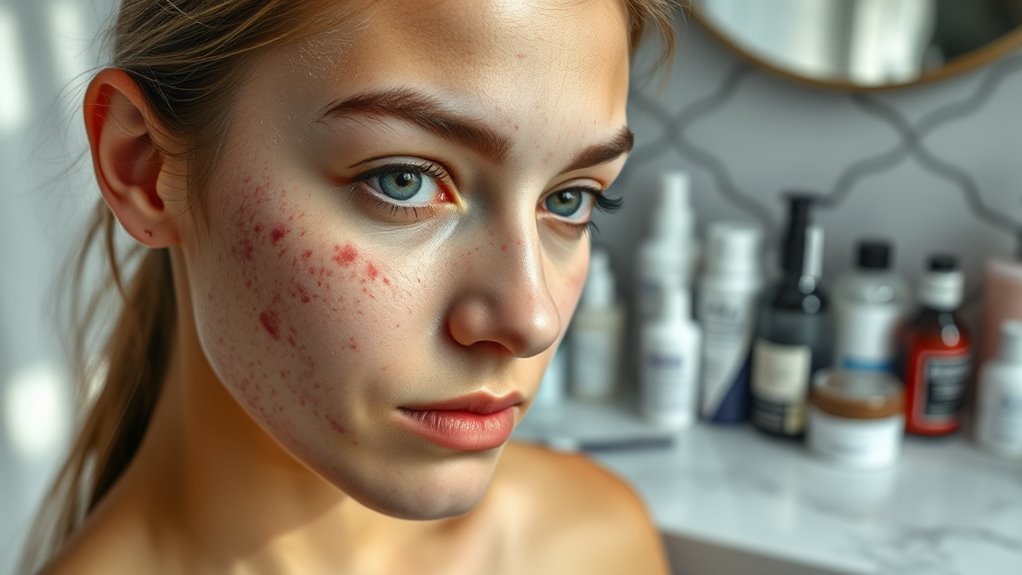Why You’re Still Breaking Out-Even With a Skincare Routine
You’re still breaking out despite your skincare routine because common oversights, like skipping daily SPF or over-exfoliating, leave your skin vulnerable to UV damage and bacteria. Dietary factors, such as high-glycemic foods and dairy, spike oil production, while stress and poor sleep elevate cortisol, fueling inflammation. Environmental triggers like pollution clog pores too. Check out practical strategies ahead to tackle these and finally clear your skin.
Key Takeaways
- Skipping sunscreen exposes your skin to UV rays, inflaming pores and causing breakouts.
- High-glycemic foods spike insulin, increasing oil production and worsening acne.
- Chronic stress elevates cortisol levels, which can exacerbate breakouts despite routines.
- Air pollution infiltrates pores, leading to inflammation and persistent acne.
- Over-exfoliating strips your skin’s barrier, allowing bacteria to thrive and cause flare-ups.
Common Skincare Oversights
Even though you’re diligent with your skincare, common oversights like skipping sunscreen or over-exfoliating can sabotage your efforts and trigger breakouts.
These persistent acne causes often stem from UV exposure that inflames pores or excessive exfoliation that strips your skin’s protective barrier, allowing bacteria to thrive.
Research indicates that inconsistent cleansing routines exacerbate the issue, as leftover dirt and oil clog follicles, leading to stubborn pimples.
To combat this, you must apply broad-spectrum SPF daily and limit exfoliation to once or twice weekly.
Always patch-test new products to avoid irritation, and maintain a gentle routine that includes double-cleansing at night.
By addressing these oversights, you’re actively reducing breakout risks and promoting clearer skin through evidence-backed habits.
Furthermore, another key oversight is skipping moisturizer, which can lead to dehydrated skin and exacerbate breakouts by compromising the skin’s natural barrier.
Additionally, failing to address common morning skincare mistakes may hinder your path to achieving truly radiant skin.
Dietary Factors Fueling Breakouts
While many factors contribute to breakouts, your diet can directly fuel them by influencing hormone levels and inflammation. High-glycemic foods, like refined carbs and sweets, spike your insulin, triggering excess oil production and clogged pores—studies link this to increased acne prevalence.
Dairy products often contain hormones and growth factors that worsen breakouts; cutting back has shown benefits in clinical trials. Processed foods loaded with trans fats and sugars promote systemic inflammation, making your skin more reactive.
To counter this, prioritize anti-inflammatory options: load up on omega-3-rich foods like salmon and walnuts, which reduce inflammation markers. Include colorful veggies and fruits for antioxidants that combat oxidative stress.
Track your intake and experiment with eliminations to identify triggers, leading to clearer skin through practical, evidence-based changes. For instance, incorporating a 10-day experiment based on personal experiences can help demonstrate the benefits of these dietary shifts on skin health.
Additionally, as per the insights on dietary impacts, avoiding food triggers like those high in sugar and dairy is essential for minimizing acne flare-ups and promoting overall skin health.
Lifestyle Habits Impacting Your Skin
Beyond diet, your daily routines shape your skin’s health by affecting stress levels, sleep quality, and physical activity. Chronic stress spikes cortisol, inflaming pores and worsening breakouts; you can combat this by practicing mindfulness or yoga, as studies show these reduce acne severity. Personal experiences with stress-related skin issues have demonstrated that incorporating targeted routines can lead to noticeable improvements in skin clarity.
Poor sleep disrupts skin repair—aim for 7-9 hours nightly, as research links insufficient rest to increased inflammation and oil production.
Meanwhile, regular exercise boosts circulation, delivering oxygen to skin cells and clearing toxins, but overdoing it without proper hygiene might exacerbate issues.
Prioritize balanced routines: schedule downtime, maintain consistent sleep, and incorporate moderate workouts. These habits, backed by dermatological evidence, help stabilize your skin’s barrier and minimize persistent breakouts.
Track changes over weeks for noticeable improvements.
Additionally, incorporating stress management tips into your daily life can enhance overall well-being and support healthier skin.
Environmental Triggers to Consider
Environmental factors often trigger breakouts by disrupting your skin’s natural balance, from air pollution to UV exposure. Air pollution, laden with fine particles, infiltrates your pores and sparks inflammation, as research from environmental dermatology confirms. To combat these issues, exploring effective acne solutions is essential for maintaining clearer skin.
For instance, urban dwellers face higher breakout rates due to these contaminants, which oxidize skin oils and promote bacterial growth. UV rays, meanwhile, weaken your skin’s barrier, making it more susceptible to damage and irritation, according to studies in the Journal of Investigative Dermatology.
You might also encounter triggers like humidity fluctuations, which alter your skin’s moisture levels and exacerbate oil production, or allergens such as pollen that provoke inflammatory responses.
Recognizing these elements helps you identify why your routine isn’t enough, as external assaults continually challenge your skin’s resilience.
Additionally, stress can manifest through various skin conditions, worsening breakouts and highlighting the need to address mental health alongside environmental factors.
Practical Strategies for Lasting Results
To combat breakouts from environmental triggers, you’ll want to implement targeted strategies that build skin resilience and deliver long-term results. To ensure you’re on the right track, it’s crucial to address common misconceptions that could undermine your efforts.
Start by incorporating broad-spectrum SPF 30+ into your daily routine, as studies show it shields against UV-induced inflammation. Next, opt for antioxidants like vitamin C serums; research confirms they neutralize free radicals from pollution, reducing oxidative stress.
Don’t overlook gentle exfoliation with AHAs twice weekly to unclog pores without stripping your barrier—clinical trials support this for clearer skin. Manage stress through mindfulness or exercise, since evidence links cortisol spikes to acne flares.
Track your triggers in a journal and adjust products seasonally for sustained efficacy. Consistency is key; pair these with a balanced diet rich in omega-3s for optimal results. Additionally, for acne-prone skin, consider adding salicylic acid to your routine, as it’s renowned for treating and preventing breakouts effectively. (141 words)

